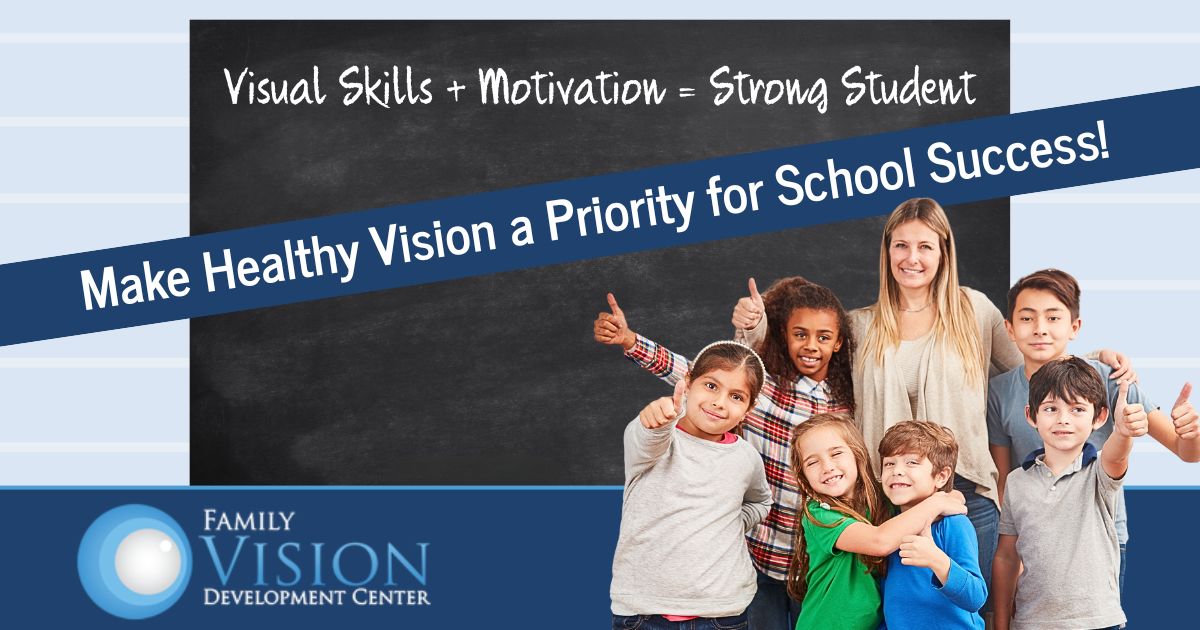As the new school year begins, parents, teachers and medical providers should all work together to achieve the goal of helping students thrive. Indeed, many factors can play a role in a child’s success in the classroom, such as study habits, teaching quality, motivation and more. But visual health is an often-overlooked factor that can have a significant impact on classroom performance.
Good vision is more than just being able to see the chalkboard or read a textbook. Vision plays a critical role in how children learn, process information, and stay engaged in the classroom. In fact, research shows that up to 80% of classroom learning is visual, making healthy eyesight one of the most important building blocks for academic achievement.
Why Vision Matters in the Classroom
Imagine trying to read a textbook when the words are blurry, or copying notes from a whiteboard that appears hazy. For many children, this isn’t a hypothetical scenario. It’s what they experience on a daily basis. A child may be intelligent, motivated, and hardworking, yet struggle in school if they are experiencing undetected vision issues. Common vision problems like nearsightedness, farsightedness, or astigmatism can make reading and focusing difficult. Other vision issues, such as trouble with eye tracking, eye teaming or visual processing, can lead to challenges in reading comprehension, handwriting or staying on task.
These struggles often go unnoticed because children may not realize their vision is abnormal, and they assume what they see is how everyone sees. Teachers and parents, meanwhile, may mistake vision-related learning problems for behavioral issues or lack of effort.
Warning Signs of Vision-Related Learning Problems
As students settle into the school year, parents and teachers should watch for these signs that a vision issue may be interfering with learning:
- Frequent headaches or eye strain after reading
- Complaints of blurred or double vision
- Difficulty staying focused on written work
- Avoidance of reading or homework
- Skipping lines or losing their place while reading
- Poor handwriting or letter reversals
- Short attention span during visual tasks
When these issues go unchecked, they can impact not only academic performance but also a child’s confidence and willingness to engage in school.
Parents and Teachers can Work Together to Encourage Classroom Success
When parents and teachers combine their efforts, it can go a long way in ensuring that students are getting the support they need. Here’s how they can work as a team:
- Schedule regular eye exams – Parents should make back-to-school eye exams part of their child’s routine. Comprehensive vision exams can detect vision issues that school screenings often miss.
- Communicate concerns – Teachers who notice issues with a child’s behavior, reading habits or attention should share their concerns right away with parents, as open communication can help to prevent potential problems.
- Accommodate students’ needs – If a student has a diagnosed vision problem, teachers can help by offering front-row seating, providing enlarged print, or allowing extra time on assignments.
- Encourage healthy habits – Both at home and in the classroom, encourage regular breaks from screens, good lighting for reading, and outdoor play to reduce eye strain and promote overall eye health.
Family Vision Development Center’s Role in Student Success
Prioritizing healthy vision at the start of the school year helps prepare students to be happy, confident and successful as the year progresses. A back-to-school vision exam can help us detect any visual concerns and provide any necessary treatment, to ensure they meet their academic goals. From vision correction through glasses or contacts, to more advanced vision therapy options that target issues like eye tracking, eye teaming, focus, hand-eye coordination and more, we are here to be your partner in your child’s success. Contact us at 630-862-2020 to schedule a vision exam today.
Family Vision Development Center is a full-service vision center offering innovative vision therapy services, sports vision therapy services, post-concussive vision rehabilitation, comprehensive vision exams for eyeglasses and contact lenses, management of ocular diseases including glaucoma, diabetes, macular degeneration and cataracts, and a state-of-the-art optical center offering the latest designs in eyewear.

